|
Spring Bottom Trawl Survey Headed Home
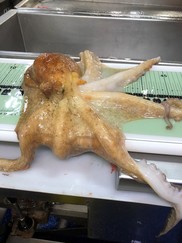
After 20-day legs that began back in March, our spring bottom trawl survey on the NOAA Ship Henry Bigelow is headed to its home port in Newport, Rhode Island. During the survey some of our scientists took time off of their busy schedules to share stories of what they saw and did while at sea. There is a story about comb jellies and an octopus, and another featuring a funky looking sea raven and a goosefish. The bottom trawl survey is a data-collecting machine. The survey extends from Cape Hatteras, North Carolina to the western Scotian Shelf. It has been conducted in the spring and fall of each year since the 1960s.
|
Back on the water, Gulf of Maine Bottom Longline Survey
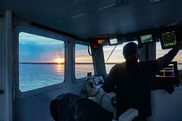
Staff from the Northeast Fisheries Science Center’s Cooperative Research Branch and two Massachusetts commercial fishing vessels completed the spring Cooperative Gulf of Maine Bottom Longline Survey on May 14th. The crews first spent several days staging the F/V Mary Elizabeth in Scituate and F/V Tenacious II in East Dennis. In just over 3 weeks, the planned 45 stations were completed successfully. The survey contributes to a more complete picture to stock assessment scientists and fisheries managers about the abundance and distribution of commercially and recreationally important fish that live in rocky habitats. Read more about the survey in our Field Blog.
|
Sampling the Tiniest Life in the Sea

Last month we completed our Spring Ecosystem Monitoring survey aboard the NOAA Ship Gordon Gunter. The survey sampled 106 stations, this year with a focus on ocean acidification samples in the Gulf of Maine, and mackerel egg and larvae samples in western Gulf of Maine and Southern New England. Check out some of the amazing tiny marine life collected on this survey. Since 1992, our research vessels have conducted this survey six times a year. We take samples at more than 100 stations spanning the continental shelf, from Cape Hatteras, North Carolina to Cape Sable, Nova Scotia. The survey uses nets with very fine mesh to collect fish larvae and eggs as well as plankton. These samples provide critical information about the ocean food chain, which supports all marine life.
|
Storymap Takes a Look at Gentrification Pressure in Northeast Fishing Communities
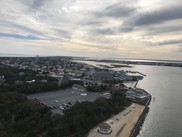
“Gentrification” is a term that is used to describe the demographic and economic changes that occur when wealthier people start moving into a community. We've taken a look at how vulnerable 29 fishing communities in the Northeast are to this kind of change. In particular, we looked at threats to the viability of a commercial or recreational working waterfront over time. Delve into the details in our new storymap, which presents both aggregated data and community-specific summaries.
|

June is Pride Month—an entire month dedicated to uplifting LGBTQ+ voices, celebrating their culture, and supporting LGBTQ rights. At the science center we’re highlighting our recently created Employee Resource Group called the LGBTQ+ ERG. We interviewed the ERG’s co-chairs Paul Clark, biological sciences technician at our Milford Lab, and Patricia “Trish” Clay, anthropologist in our Social Sciences Branch, to learn more about the ERG, their goals, what kinds of topics and issues they’re addressing, and why they decided to lead the ERG.
|
Paul Simon Galtsoff: Oyster Researcher and Woods Hole Lab Advocate
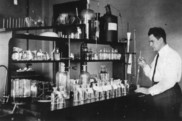
In celebration of our 150th anniversary, we are highlighting people who helped build the foundation of fisheries and marine science. Meet Paul S. Galtsoff, noted oyster researcher and skilled administrator who championed the Woods Hole Lab in tough times. Born in 1887 in Moscow, Russia, Paul Galtsoff was trained at the Imperial Moscow University. He graduated in 1910 with a degree in zoology and chemistry and married Eugenia Troussoff in Moscow in 1911. He soon became one of Russia’s leading scientists. As unrest took hold in the country, he joined the Imperial Russian Army in 1914. The couple moved to Sevastopol where, at age 27, he became the director of the Marine Biological Station, a branch of the Imperial Academy of Science.
|
Spring 2021 Current Conditions Report Now Available
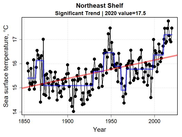
Every 6 months, our Ecosystem Dynamics & Assessment Branch releases a summary of ecosystem and fisheries data for the Northeast U.S. continental shelf ecosystem. The report includes measurements of temperature and salinity indicators of seasonal warming and cooling patterns. During the last half of 2020, sea surface temperatures in the Northeast U.S. Shelf Ecosystem continued to be above average, following a shift in thermal conditions that began around 2010. Fall phytoplankton blooms were generally below average and it is questionable whether a fall bloom developed in any part of the ecosystem. The fall thermal transition continues to shift to progressively later in the year, raising concern over the timing of production cycles in the food web. See the full report here.
|
Peer-Reviewed Estimate of Right Whale Population Abundance Released
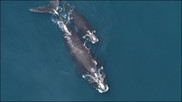
The 2020 preliminary estimate of North Atlantic right whale population numbers was released in October 2020. An update of that number calculated during a recent peer review of that work is now available. The preliminary estimate was 366 animals alive on December 1, 2019, and the final estimate is 368. The work also further strengthens evidence of a "regime shift" in survival rates after 2010-2011, and suggests a different way of characterizing annual estimates of age-specific survival in future estimates of North Atlantic population demographics.
|
Artificial Intelligence Helps Researchers Sense What Can’t Be Touched
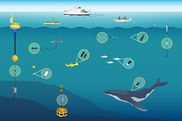
Our protected species researchers study animals that are rare and protected from many traditional kinds of biological sampling. So how do you study an animal that you sometimes rarely see and oftentimes can’t touch? Artificial intelligence, remote sensing, and machine learning technologies are proving particularly valuable as a way forward. Our researchers are harnessing these methods to identify large whales, count large numbers of young seals on crowded pupping grounds, and understand what marine animals are in an area even if they are swimming underwater.
|
From the Director: Back From Sea
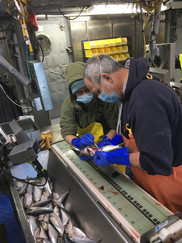
I recently returned from the last leg of the Bottom Trawl Survey. It was good to be at sea and to understand first hand what is required to collect data in 2021. Ten years from now these data will be used in scientific studies and in support of management. Not included in the data will be the extraordinary steps taken to collect it: shelter-in-place, testing, masks, and physical distancing. Not to mention getting the ship ready, and the loading and unloading of gear and provisions all under strict access protocols. This pattern is being repeated across our data collection programs and by state, university, and industry partners. I want to thank everyone in the marine resource science enterprise in the Northeast region for their tireless commitment to conducting important science under difficult circumstances. As John Bullard, retired Regional Administrator for the Greater Atlantic Regional Fisheries Office used to say, “we are all in it together”. Jon Hare - Center Director
|
|
|
Upcoming Events
June 1-July 1 2021 Atlantic Cod Stock Structure Workshops
June 28-July 1 Conference: Mid-Atlantic Climate Change Education
June 28-July 2 2021 June Management Track Assessment Peer Review Meeting
July 12-13 Transboundary Resource Assessment Committee: Peer Review Meeting
July 14-16 Haddock: 2021 Research Track Assessment Peer Review Meeting
July 26-30 Educator Workshop: Scientific Inquiry in the Field
July 28-30 Educator Workshop: Summer Institute for Climate Change Education
|
|
|
|
|